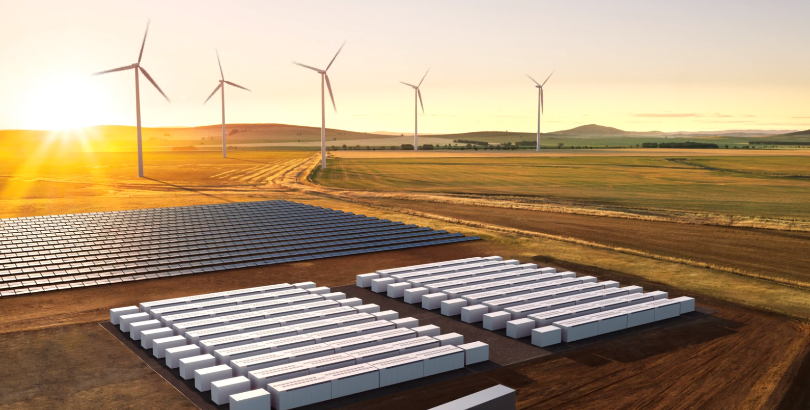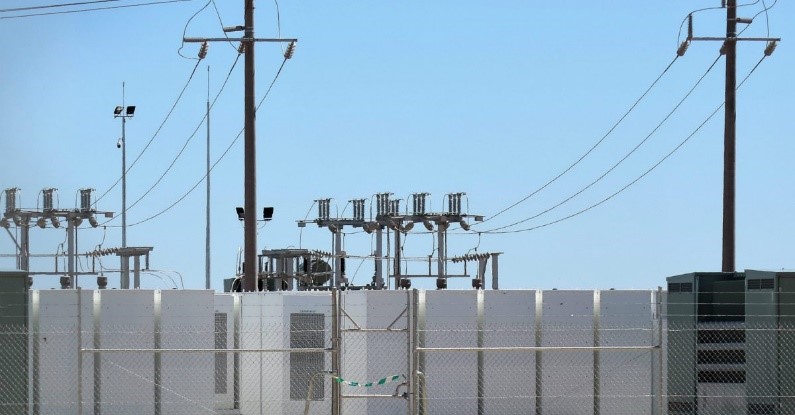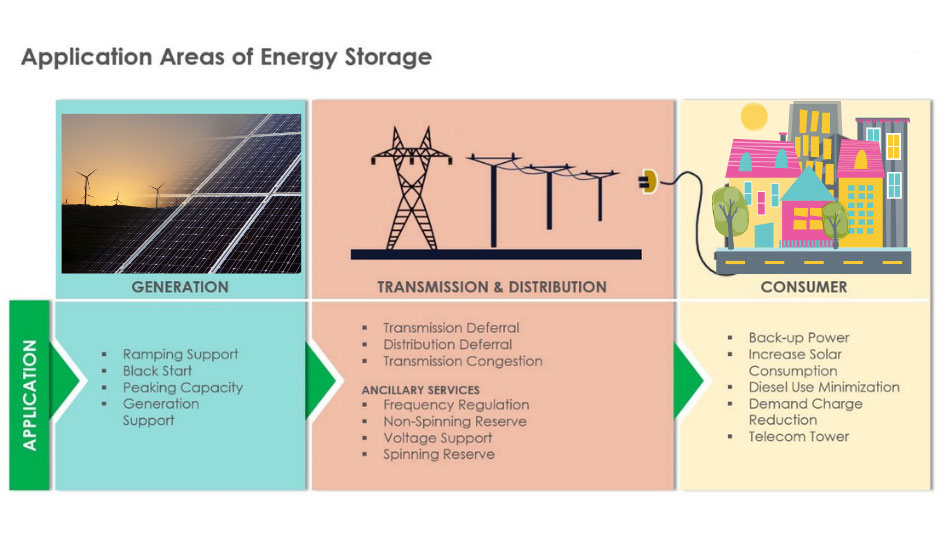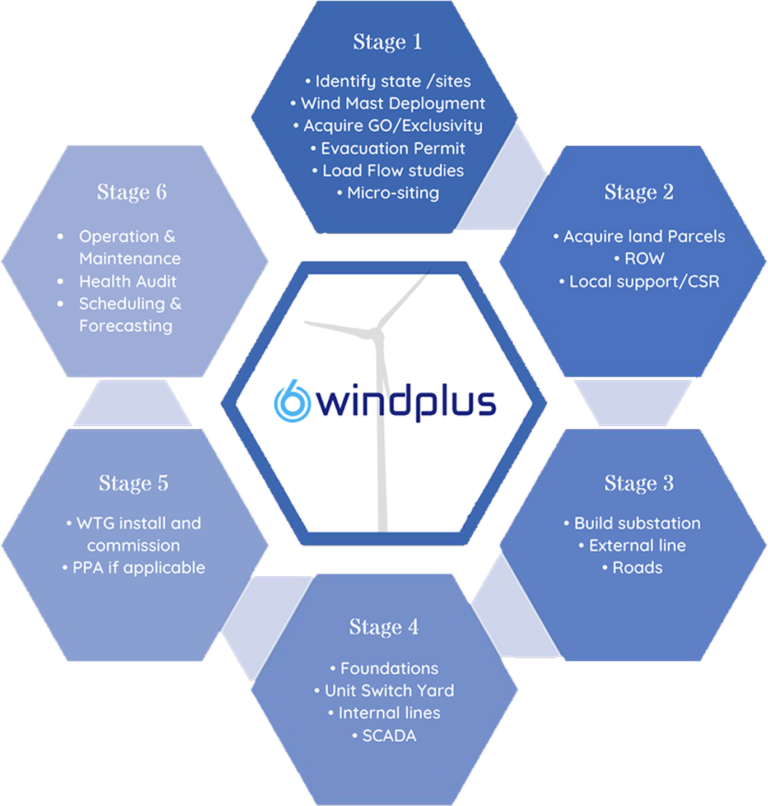Battery energy storage plays a vital role in renewable energy’s future as it is one of the key solutions to effectively integrate high shares of solar and wind renewables in power system worldwide. The analysis from the International Renewable Energy Agency (IREA) demonstrates how electricity storage technologies can be used for a diversity of applications in the power sector, from e-mobility and behind-the-meter applications to utility-scale use cases.
Presently, utility-scale battery storage systems are mostly being deployed in Australia, Germany, Japan, United Kingdom, the United States and other European countries. One of the larger systems in terms of capacity is the Tesla 100 MW / 129 MWh Li-Ion battery storage project at Hornsdale Wind Farm in Australia. In the US-State of New York, a high-level demonstration project using a 4 MW / 40 MWh battery storage system showed that the operator could reduce almost 400 hours of congestion in the power grid and save up to USD 2.03 million in fuel costs.

In addition, several island and off-grid communities have invested in significant battery storage to balance the grid and store excess renewable energy. In a mini-grid battery project in Martinique, the output of a solar PV farm is supported by a 2 MWh energy storage unit, ensuring that
electricity is injected into the grid at a constant rate, avoiding the need for back-up generation. In Hawaii, almost 130 MWh of battery storage systems have been implemented to provide smoothening services for solar PV and wind energy.
As the Renewable energy industry moves towards 100% efficiency, India is well on track to accomplish its objectives well before the target date of 2030,” India has sustained that it is not a polluter and cause of climate change and has willingly committed to reduce greenhouse gas emission intensity by 33-35 per

cent below 2005 levels by 2030. However, once we say this we need to have a mind-set shift and prompt to harness the potential of intermittent energy sources such as Solar Power, Wind Power, Battery Energy storage system and Green Hydrogen which not only reduce carbon emissions but also reduce our cost of Energy even when Grid is available.
One of the rising and moving solutions is the Battery Energy Storage System, called BESS. Battery Energy Storage System is a rechargeable Li ion based battery system that stores energy from solar arrays or the electric grid and provides that energy to your home or business. It is quieter and obviously way cleaner technology, as it helps to reduce carbon and pollution in the environment. It reduces the consumption of fossil fuel and grid power in a cost effective, harmless, reliable and intelligent manner.
Applications of Battery Energy Storage System
PEAK SHAVING- In a commercial setting, the most important application of energy storage is peak shaving. For businesses on demand charge utility tariffs, between 30% and 70% of the utility bill may be made up of demand charges. Solar arrays alone aren’t always a sufficient solution for these businesses. Battery energy storage systems, however, can guarantee that no power above a predetermined threshold will be drawn from the grid during peak times.
LOAD SHIFTING – Battery energy storage systems allow businesses to shift energy usage by charging batteries with solar energy or when electricity is cheapest and discharging batteries when it’s more expensive. This is particularly useful for businesses on rural electric cooperatives (RECs) or other utilities that don’t offer net metering on an annualized basis.
EMERGENCY BACKUP – Like the uninterruptible power supply (UPS) under your desk or in your server room, battery energy storage systems can keep operations running during power outages.
MICROGRIDS– Energy storage opens up the possibility of building microgrids in conjunction with renewable energy. The scalability and turnkey simplicity of battery energy storage make these systems economically viable. Islandable microgrids can be used in certain large commercial facilities – or even entire communities. The American Samoa island Ta’u, who switched from diesel generation to solar + storage, is a good example of this application.

RENEWABLE INTEGRATION– Energy storage can smooth the output of renewable power generation sources. Solar produces cyclically – day vs. night, summer vs. winter. Energy storage allows solar energy production to mimic the consistency of fossil fuel energy sources.
GRID SERVICES- For utility-scale customers, battery energy storage can provide a host of valuable applications, including reserve capacity, frequency regulation, and voltage control to the grid.
Residential Applications
SOLAR SELF-CONSUMPTION – For homeowners, solar self-consumption is the most important application of energy storage systems. Energy storage allows homeowners to store surplus energy produced by solar panels during the day and use it at night. This can be a great option for some customers on utilities that don’t offer net metering.
OFF GRID – Batteries are necessary for a solar-powered off-grid home. Modern battery energy storage systems far exceed the capabilities of the marine lead-acid batteries used by pioneering solar DIYers in decades past. Modern systems are easier to install, easier to configure, more scalable, much cheaper per kWh of storage, and far safer.
EMERGENCY BACKUP -Battery energy storage provides the peace of mind that comes with keeping the power on during an outage. Energy storage works with or without solar and is a safe and seamless alternative to small generators, which are one of the main contributors to carbon monoxide poisoning in America.
The BESS system consists of the Li ion battery pack, which connects multiple cells to appropriate voltage and capacity; the battery management system (BMS) and the battery thermal management system (B-TMS). The BMS protects the cells from harmful operation, in terms of voltage, temperature, and current, to achieve reliable and safe operation, and balances varying cell states-of-charge (SOCs) within a serial connection. The B-TMS controls the temperature of the cells according to their specifications in terms of absolute values and temperature gradients within the pack. It also consists of a desired rated PCU and all components thereafter get mounted inside a container making it easy to use, store, move with a compact foot print. Both the major components required for the reliable operation of the overall system are controlled through the energy management system (EMS). The EMS is responsible for system power flow control, management, and distribution.
Battery life varies from 3000 to 4000 cycles, which means typically 10 to 12 years, making it a viable solution and leading to the peace of mind for homes and businesses. It is best suited for villas, bungalows, restaurants, hospitals, ATMs, Banks, Cold Storages, Constructions Sites, Remote Areas, Process Industries, Defence Areas, IT and many more to name. It can be charged with various options like Solar Power, Wind Power, Diesel Gensets and Grid whichever source is available. It is a maintenance-free system with no OPEX and gives you a pay back from 1 to 7 years depending upon the application.









